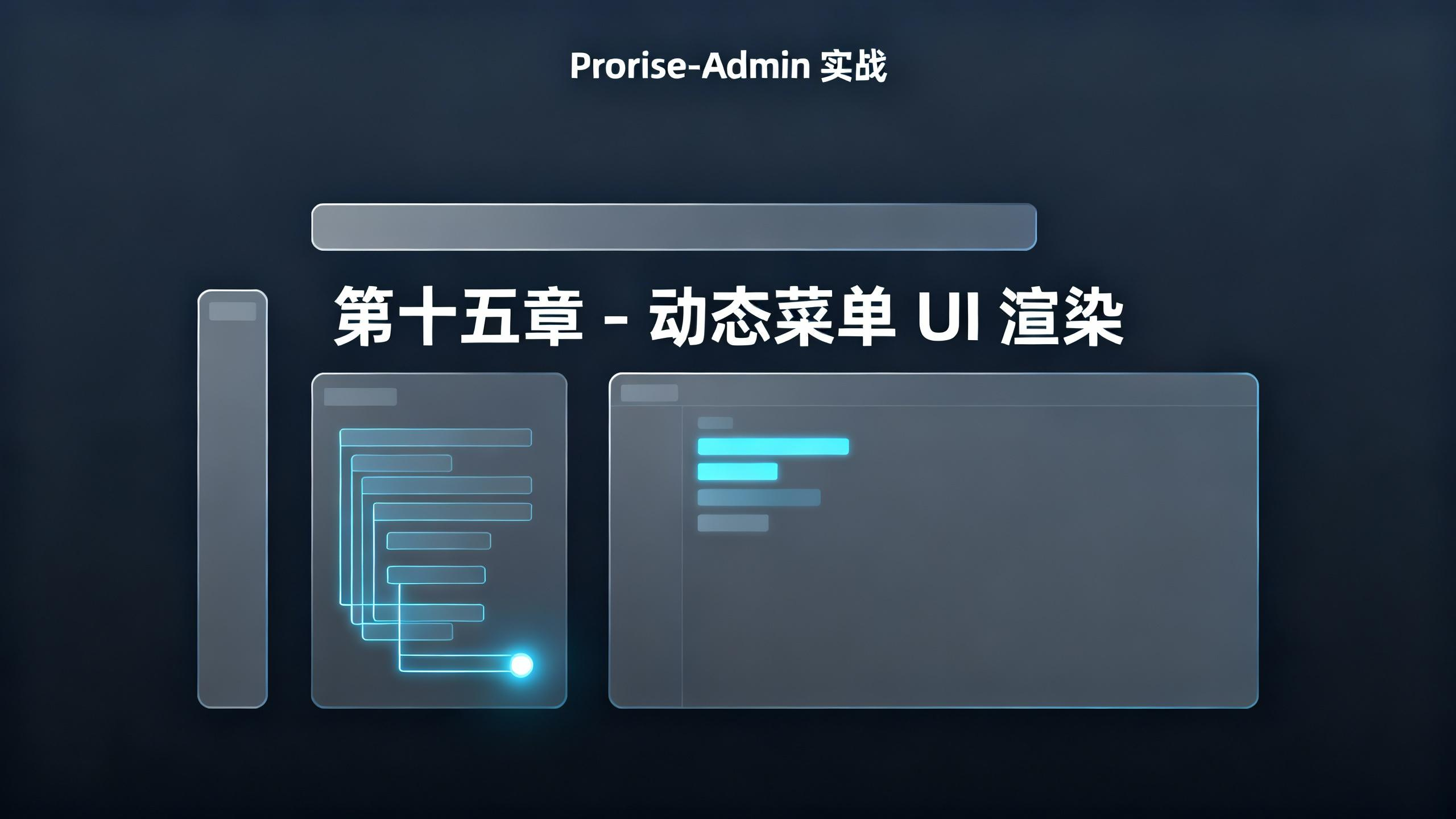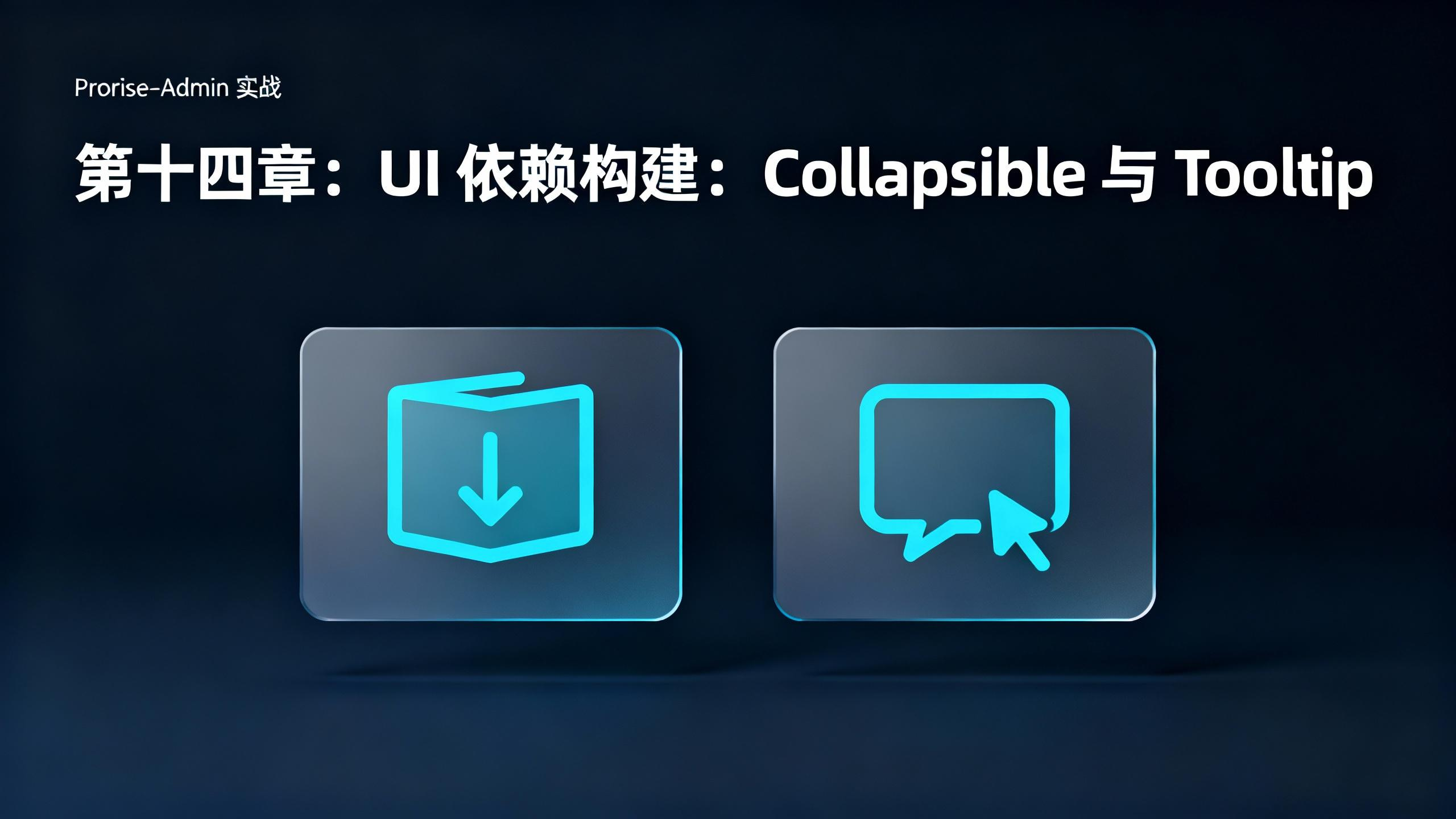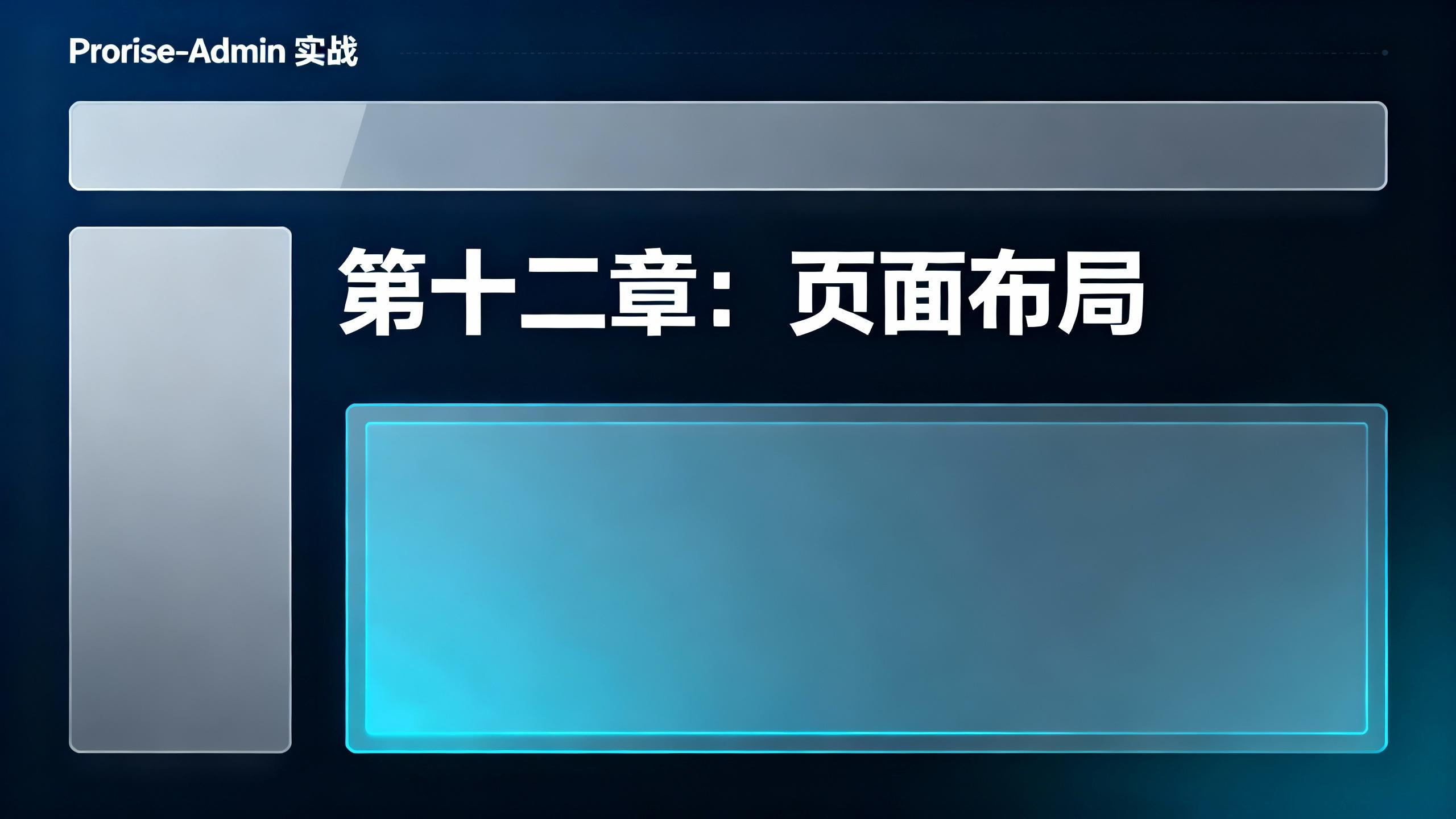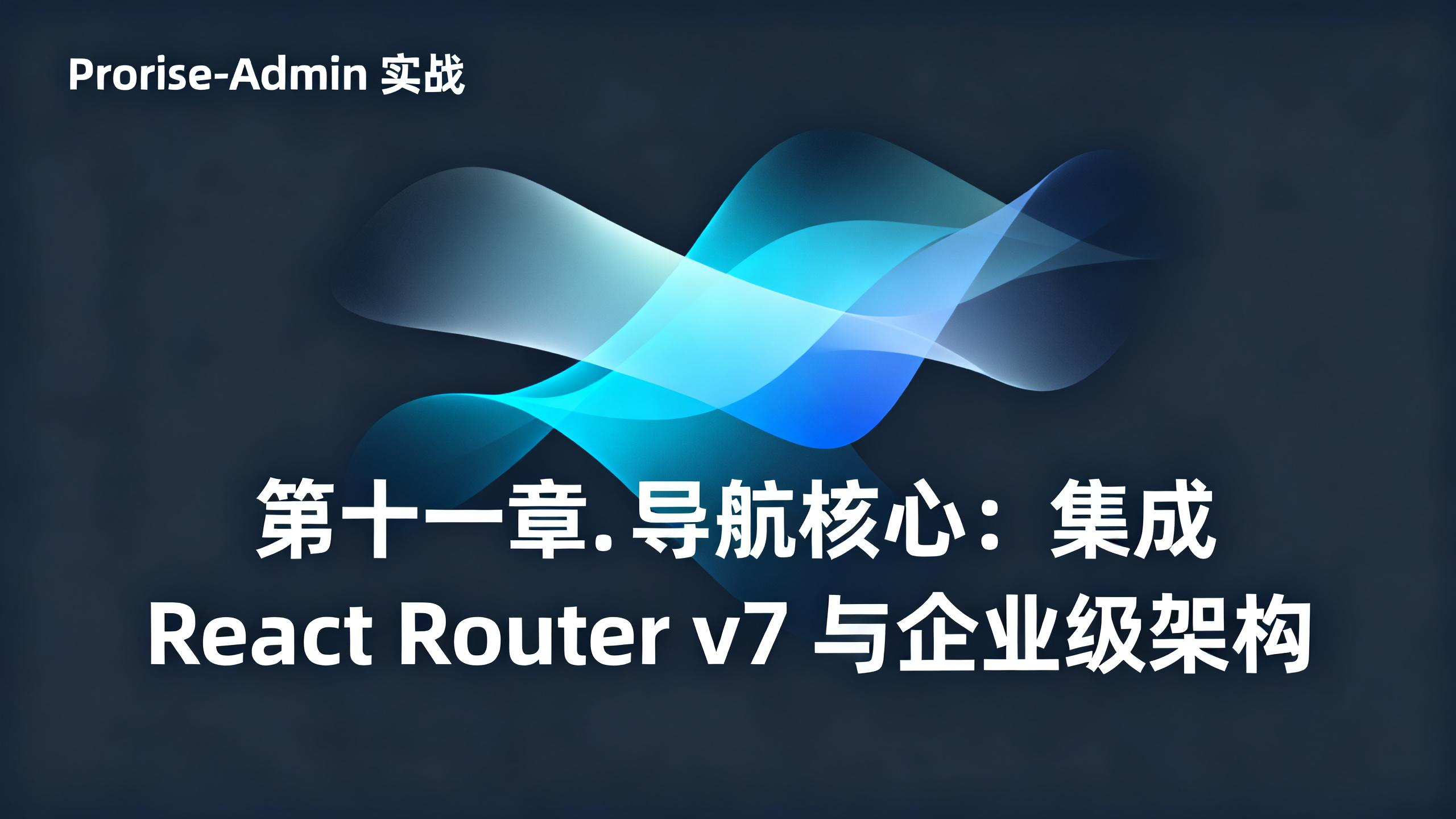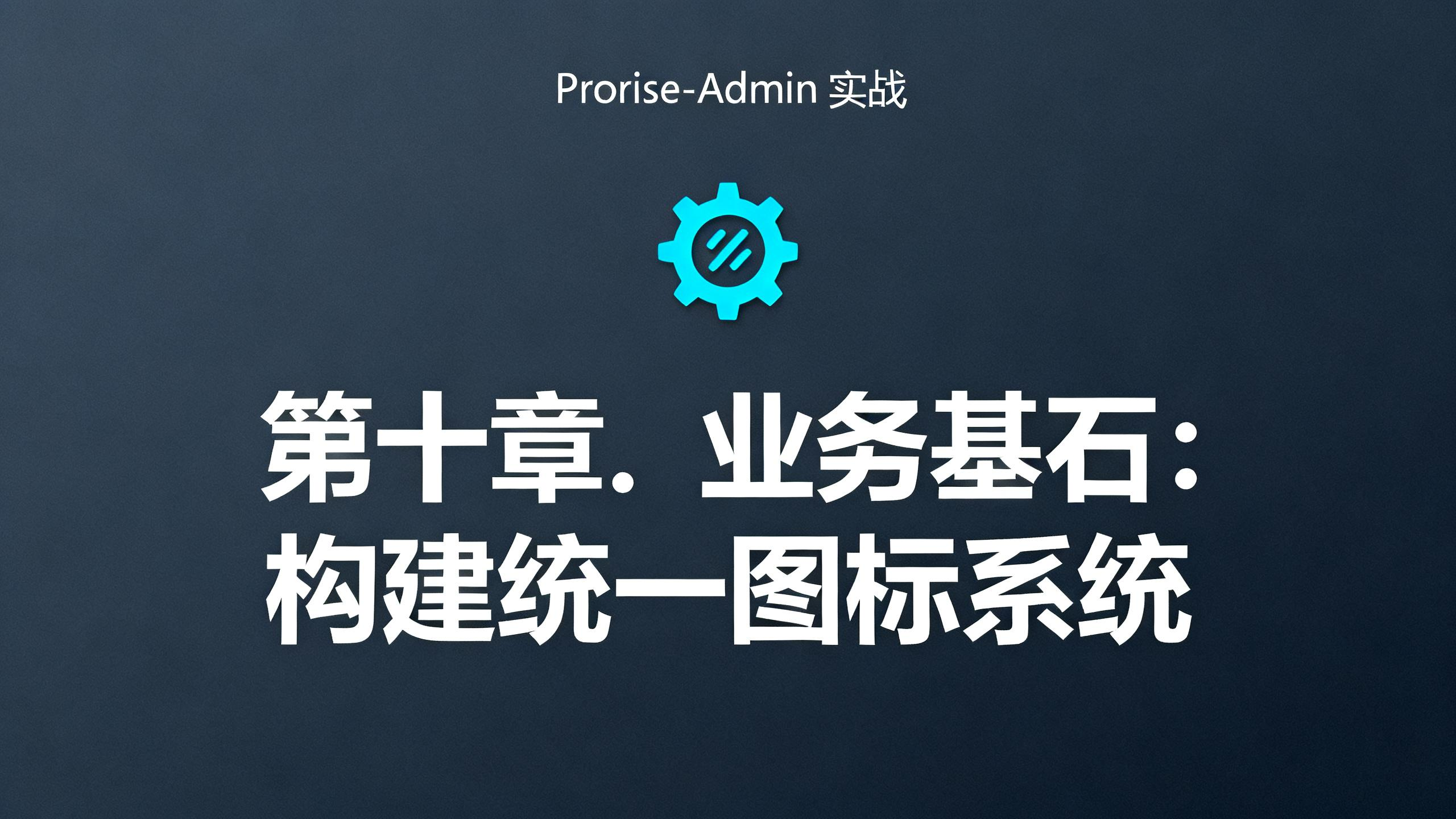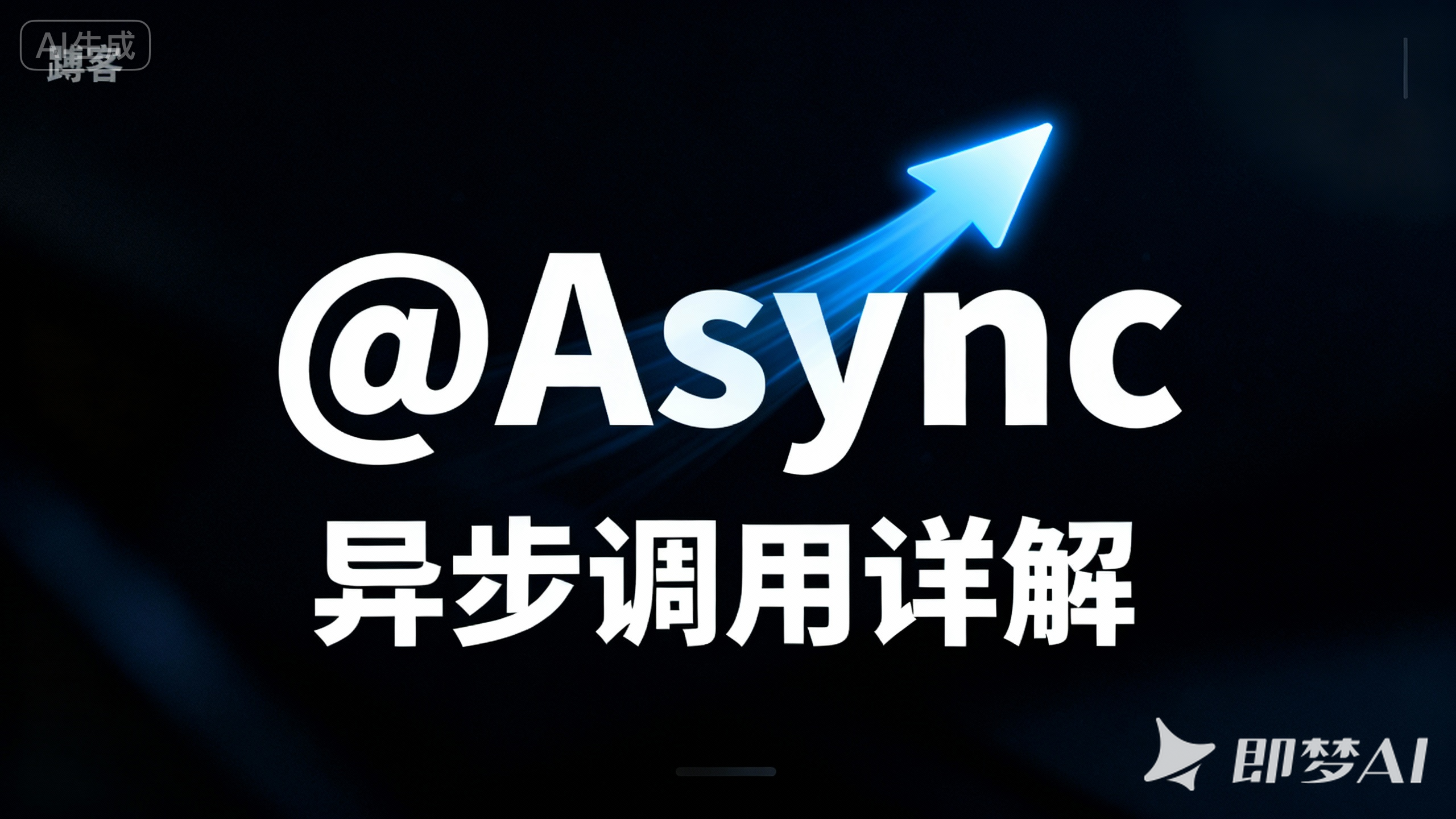第六章: TypeScript:为 React 应用注入类型之魂
摘要: 在前面的章节中,我们已经使用 JavaScript 构建了多个功能完备的 React 应用。我们已经体会到了 React 的强大,但同时也可能感受到了 JavaScript 动态类型带来的一些“不安全感”。随着应用规模的扩大,我们如何确保传递给组件的数据总是正确的?如何避免因为一个简单的拼写错误或类型不匹配而导致的运行时 Bug?本章将给出答案:TypeScript。
为什么要在学完 React 基础后再深入 TypeScript?
这是一个经过精心设计的学习路径。我们之所以先用 JavaScript 学习 React,是为了让您能够 专注于 React 自身的核心思想——组件化、状态管理、Hooks 等,而不被类型定义的语法分散注意力。
现在,您已经对 React 的“骨架”了然于胸,是时候为其穿上“铠甲”了。TypeScript 这层铠甲将为我们带来:
- 代码的健壮性: 在代码 运行前(编译阶段)就能发现大量的潜在错误,而不是等到用户在浏览器中遇到问题。
- 开发体验的飞跃: 享受无与伦比的编辑器自动补全、类型提示和重构能力,让我们写代码更快、更自信。
- 团队协作的基石: 类型定义本身就是最精准、最不会过时的“文档”。任何接手我们代码的同事都能立即明白一个组件需要什么数据,返回什么结果。
在本章中,我们将系统性地学习如何将 TypeScript 的类型系统无缝融入到 React 开发的每一个环节,构建出真正生产级的应用程序。
6.1. Props 的类型艺术
React 组件的核心是通过 props 接收数据。那么,我们与 TypeScript 的第一次亲密接触,也自然从定义 props 的“形状”和“契约”开始。
6.1.1. 基础:为 Props 定义类型
在纯 JavaScript 中,我们无法限制一个组件能接收哪些 props,也无法限制这些 props 的类型。但在 TypeScript 中,我们可以像签订合同一样,精确地定义组件的“输入”。
让我们从一个简单的 User 组件开始。
文件路径: src/components/User.tsx
1
2
3
4
5
6
7
8
9
10
11
12
13
14
15
16
17
18
19
20
21
22
23
|
const User = (props: { name: string; age: number; isStudent: boolean }) => {
return (
<main>
<h2 className="text-xl font-bold">{props.name}</h2>
<p>年龄: {props.age}</p>
<p>是学生吗? {props.isStudent ? '是' : '否'}</p>
</main>
);
};
export default User;
|
现在,当我们在 App.tsx 中使用这个组件时,TypeScript 和我们的编辑器会立刻成为我们的“守护神”。
文件路径: src/App.tsx
1
2
3
4
5
6
7
8
9
10
11
12
13
14
15
16
17
18
| import User from './components/User';
function App() {
return (
<div>
{/* 正确使用 */}
<User name="Prorise" age={3} isStudent={true} />
{/* 尝试传递错误类型,编辑器会立刻报错! */}
{/* <User name="Prorise" age="三岁" isStudent={true} /> */}
{/* ^^^^^^^^^^ 类型 'string' 不能赋值给类型 'number' */}
{/* 尝试漏掉某个 prop,编辑器也会报错! */}
{/* <User name="Prorise" isStudent={true} /> */}
{/* `^^^^` 缺少属性 'age' */}
</div>
);
}
|
6.1.2. 优化:解构与自定义类型 (type / interface)
内联类型定义虽然直接,但有两个缺点:一是当 props 很多时会显得很冗长;二是我们每次都写 props.xxx 也很繁琐。我们可以通过 解构 和 自定义类型 来优化它。
文件路径: src/components/User.tsx (升级版)
1
2
3
4
5
6
7
8
9
10
11
12
13
14
15
16
17
18
19
20
21
22
23
24
25
| type UserProps = {
name: string
age: number
isStudent: boolean
}
const User = ({ name, age, isStudent }: UserProps) => {
return (
<main>
<h2 className="text-xl font-bold">{name}</h2>
<p>年龄:{age}</p>
<p>身份:{isStudent ? '学生' : '非学生'}</p>
</main>
)
}
export default User
|
这种写法是 React + TypeScript 开发中的 黄金标准:代码既简洁又类型安全。
现在,让我们亲手实践一下。我们将创建一个可复用的 Button 组件,它需要接收 label、onClick 和 disabled 三个 props。
文件路径: src/components/Button.tsx
1
2
3
4
5
6
7
8
9
10
11
12
13
14
15
16
17
18
19
20
21
22
23
24
25
26
27
28
| import React from 'react';
type ButtonProps = {
label: string;
onClick: () => void;
disabled?: boolean;
};
const Button = ({ label, onClick, disabled = false }: ButtonProps) => {
return (
<button
onClick={onClick}
disabled={disabled}
className={`
px-4 py-2 font-semibold text-white rounded-md transition-colors
${disabled
? 'bg-gray-400 cursor-not-allowed'
: 'bg-blue-500 hover:bg-blue-600'
}
`}
>
{label}
</button>
);
};
export default Button;
|
文件路径: src/App.tsx (使用 Button 组件)
1
2
3
4
5
6
7
8
9
10
11
12
13
14
15
16
17
18
19
20
21
22
23
| import Button from './components/Button';
function App() {
const handlePrimaryClick = () => {
alert('主按钮被点击了!');
};
return (
<div className="p-8 space-x-4">
<Button
label="点我"
onClick={handlePrimaryClick}
/>
<Button
label="禁用按钮"
onClick={() => alert('这个提示不会出现')}
disabled={true}
/>
</div>
);
}
export default App;
|
6.1.4. 特殊 Prop: children 的类型
我们知道,children 是一个特殊的 prop,代表了组件标签之间的内容。React 为它提供了一个专门的类型:React.ReactNode。
文件路径: src/components/Card.tsx (示例)
1
2
3
4
5
6
7
8
9
10
11
12
13
14
15
| import type { ReactNode } from 'react';
type CardProps = {
children: ReactNode;
};
const Card = ({ children }: CardProps) => {
return (
<div className="p-4 border rounded-lg shadow-md">
{children}
</div>
);
};
export default Card;
|
现在,我们可以在 App.tsx 中安全地使用 Card 组件来包裹任何内容。
1
2
3
4
5
6
7
8
9
10
11
| import Card from './components/Card';
import User from './components/User';
function App() {
return (
<Card>
{/* 这里的 User 组件就是 Card 的 children */}
<User name="Prorise" age={3} isStudent={true} />
</Card>
);
}
|
总结:
为 props 添加类型,是我们从 JavaScript 迈向 TypeScript 的第一步,也是最重要的一步。它像一道坚固的防线,能拦截掉绝大多数因数据类型错误而引发的 Bug,并为我们提供了无与伦比的开发体验。
6.2. 类型的复用与组合
在上一节中,我们学会了为单个组件定义 props 类型。但随着应用变得复杂,我们会发现一个普遍现象:不同的组件之间,往往需要共享相似甚至相同的 props 结构。例如,一个 UserProfileCard 组件和一个 UserEditForm 组件可能都需要接收一个包含 id, name, email 的 user 对象。
如果我们为每个组件都重复定义一次这个 user 对象的类型,就会违反 DRY (Don’t Repeat Yourself) 原则,导致代码冗余和维护困难。本节,我们将学习如何创建可复用的、可组合的类型,从根本上解决这个问题。
6.2.1. 第一步:创建全局类型定义文件
最佳实践是将那些需要在多个地方共享的类型,抽离到一个或多个专门的 .ts 文件中。这通常放在一个 types 或 interfaces 目录下。
让我们首先创建一个全局的类型定义文件。
文件路径: src/types.ts
1
2
3
4
5
6
7
8
9
10
11
12
13
14
15
16
17
|
type Info = {
id: number;
name: string;
email: string;
};
type AdminInfoList = Info & {
role: string;
lastLogin: Date;
};
export { type Info, type AdminInfoList };
|
type vs. interface for Extension:
- 使用
type: 我们通过交叉类型 & 来合并两个类型,例如 type C = A & B。 - 使用
interface: 我们可以通过 extends 关键字来实现继承,例如 interface C extends A { /* B's properties */ }。在大多数场景下,两者都能达到相似的效果,选择哪种主要取决于团队的编码规范和个人偏好。
6.2.2. 第二步:在组件中导入并使用共享类型
现在,我们可以在不同的组件中,像导入一个模块一样,导入并使用我们刚刚定义的共享类型。
创建 UserInfo 组件
这个组件只关心基础的用户信息。
文件路径: src/components/UserInfo.tsx
1
2
3
4
5
6
7
8
9
10
11
12
13
14
15
16
17
18
19
20
21
22
| import React from 'react'
import { type Info } from '../types'
type UserInfoProps = {
user: Info
}
const UserInfo: React.FC<UserInfoProps> = ({ user }) => {
return (
<div className="p-4 bg-gray-100 rounded-lg shadow-md mb-4">
<h2 className="text-xl font-bold text-gray-800">普通用户信息</h2>
<p>ID: {user.id}</p>
<p>姓名: {user.name}</p>
<p>邮箱: {user.email}</p>
</div>
)
}
export default UserInfo
|
React.FC 是什么?
React.FC (或 React.FunctionComponent) 是一个内置的 TypeScript 类型,用于定义函数组件。它提供了一些基础的类型定义(例如 children),虽然在现代 React 中,我们更推荐直接像 const MyComponent = ({...}: MyProps) => {} 这样定义组件,但在许多代码库中您仍然会看到 React.FC 的使用。
1
2
3
| const UserInfo = ({ user }: UserInfoProps) => {
}
export default UserInfo
|
创建 AdminInfo 组件
这个组件需要更详细的管理员信息。
文件路径: src/components/AdminInfo.tsx
1
2
3
4
5
6
7
8
9
10
11
12
13
14
15
16
17
18
19
20
21
22
| import React from 'react'
import { type AdminInfoList } from '../types'
type AdminInfoProps = {
admin: AdminInfoList
}
const AdminInfo = ({ admin }: AdminInfoProps) => {
return (
<div className="p-4 bg-blue-100 rounded-lg shadow-md">
<h2 className="text-xl font-bold text-blue-800">管理员信息</h2>
<p>ID: {admin.id}</p>
<p>姓名: {admin.name}</p>
<p>邮箱: {admin.email}</p>
<p>角色: {admin.role}</p>
<p>上次登录: {admin.lastLogin.toLocaleString('zh-CN')}</p>
</div>
)
}
export default AdminInfo
|
6.2.3. 第三步:在 App.tsx 中组合使用
最后,我们在主应用中创建符合这些类型的数据,并将其传递给相应的组件。TypeScript 会在后台默默地为我们检查所有的数据结构是否正确。
文件路径: src/App.tsx
1
2
3
4
5
6
7
8
9
10
11
12
13
14
15
16
17
18
19
20
21
22
23
24
25
26
27
28
29
30
31
| import UserInfo from './components/UserInfo'
import AdminInfo from './components/AdminInfo'
import { type Info, type AdminInfoList } from './types'
const App = () => {
const user: Info = {
id: 1,
name: '张三',
email: 'zhangsan@example.com',
}
const admin: AdminInfoList = {
id: 2,
name: '李四',
email: 'lisi@example.com',
role: '管理员',
lastLogin: new Date(),
}
return (
<div className="container mx-auto p-8">
<UserInfo user={user} />
<AdminInfo admin={admin} />
</div>
)
}
export default App
|
总结:
通过将共享的类型定义抽离到单独的文件中,我们实现了 类型层面的代码复用。这种做法极大地提升了大型应用的可维护性:
- 单一事实来源: 当用户数据结构需要变更时(例如增加一个
age 字段),我们只需要修改 src/types.ts 文件,所有使用该类型的组件都会立刻得到类型检查的提示,确保我们不会遗漏任何需要修改的地方。 - 代码的清晰性与自文档化:
import { type Info } from '../types' 这行代码清晰地告诉了任何阅读者,UserInfo 组件依赖于一个全局定义的数据结构。
6.3. Hooks 的类型推断与约束
我们已经掌握了如何为组件的“输入” (props) 添加类型。现在,我们将焦点转向组件的“内部”:如何为 useState hook 管理的状态添加类型,确保我们的组件不仅接收的数据是正确的,其内部维护的数据也同样安全可靠。
6.3.1. 基础:useState 的类型推断
TypeScript 最强大的功能之一就是类型推断。在大多数简单场景下,我们甚至不需要为 useState 显式地指定类型,因为它足够“聪明”,能够根据我们提供的 初始值 自动推断出状态的类型。
文件路径: src/App.tsx
1
2
3
4
5
6
7
8
9
10
11
12
13
14
15
16
17
18
19
20
21
22
23
24
25
26
27
28
29
30
31
32
33
34
| import { useState } from "react";
import UserProfile from "./components/UserProfile";
import TodoList from "./components/TodoList";
const App = () => {
const [count, setCount] = useState(0);
const increment = () => {
setCount((prevCount) => prevCount + 1);
};
return (
<div className="container mx-auto p-8 space-y-8">
<div>
<h1 className="text-2xl font-bold">计数器: {count}</h1>
<button onClick={increment} className="mt-2 px-4 py-2 bg-blue-500 text-white rounded">
增加
</button>
</div>
<UserProfile />
<TodoList />
</div>
);
};
export default App;
|
对于字符串、布尔值等基础类型,TypeScript 的类型推断都能完美工作,我们无需做任何额外的事情。
6.3.2. 进阶:显式指定复杂状态的类型
当我们的状态是一个复杂的对象或数组时,最佳实践是先使用 interface 或 type 定义这个状态的“形状”,然后将它作为泛型参数传递给 useState。
场景一:状态为对象 (Object)
让我们构建一个用户个人资料的组件,其状态是一个包含多个字段的对象。
文件路径: src/components/UserProfile.tsx
1
2
3
4
5
6
7
8
9
10
11
12
13
14
15
16
17
18
19
20
21
22
23
24
25
26
27
28
29
30
31
32
33
34
35
36
37
38
39
40
41
42
43
44
45
46
47
48
49
50
51
52
53
54
55
56
57
58
59
60
61
| import { useState } from "react";
interface UserProfileData {
name: string;
age: number;
email: string;
}
const UserProfile = () => {
const [profile, setProfile] = useState<UserProfileData>({
name: "",
age: 0,
email: "",
});
const updateName = (name: string) => {
setProfile((prevProfile) => ({ ...prevProfile, name }));
};
return (
<div className="p-4 bg-gray-100 rounded-lg shadow-md space-y-4">
<h2 className="text-xl font-bold text-gray-800">用户个人资料</h2>
<div className="flex flex-col space-y-2">
<input
type="text"
placeholder="姓名"
value={profile.name}
onChange={(e) => updateName(e.target.value)}
className="p-2 border rounded"
/>
<input
type="number"
placeholder="年龄"
value={profile.age > 0 ? profile.age : ""}
onChange={(e) => setProfile(p => ({...p, age: Number(e.target.value)}))}
className="p-2 border rounded"
/>
<input
type="email"
placeholder="邮箱"
value={profile.email}
onChange={(e) => setProfile(p => ({...p, email: e.target.value}))}
className="p-2 border rounded"
/>
</div>
<div className="mt-4 p-2 bg-gray-200 rounded">
<h3 className="font-semibold">资料预览:</h3>
<p>姓名: {profile.name}</p>
<p>年龄: {profile.age}</p>
<p>邮箱: {profile.email}</p>
</div>
</div>
);
};
export default UserProfile;
|
场景二:状态为对象数组 (Array of Objects)
现在,我们来构建一个 Todo List,其状态是一个由多个 Todo 对象组成的数组。
文件路径: src/components/TodoList.tsx
1
2
3
4
5
6
7
8
9
10
11
12
13
14
15
16
17
18
19
20
21
22
23
24
25
26
27
28
29
30
31
32
33
34
35
36
37
38
39
40
41
42
43
44
45
| import { useState } from 'react'
interface Todo {
id: number
task: string
completed: boolean
}
function TodoList({ id, task, completed }: Todo) {
const [todos, setTodos] = useState<Todo[]>([])
const addTodo = (task: string) => {
const newTodo: Todo = {
id: Date.now(),
task,
completed: false,
}
setTodos((prevTodos) => [...prevTodos, newTodo])
}
return (
<div className="p-4 bg-gray-100 rounded-lg shadow-md">
<h2 className="text-xl font-bold text-gray-800">待办事项列表</h2>
<button
onClick={() => addTodo('学习 TypeScript')}
className="my-2 px-4 py-2 bg-green-500 text-white rounded"
>
添加任务
</button>
<ul className="list-disc pl-5">
{todos.map((todo) => (
<li
key={todo.id}
className={todo.completed ? 'line-through text-gray-500' : ''}
>
{todo.task}
</li>
))}
</ul>
</div>
)
}
export default TodoList
|
6.3.3. 特殊场景:初始状态为 null
在处理异步数据时,我们常常遇到的一个场景是:数据在初始时不存在,需要等 API 返回。此时,状态的类型可能是 Data | null。这就必须使用显式泛型了。
1
2
3
4
5
6
7
8
9
10
11
12
13
14
15
16
17
18
19
20
21
22
23
24
25
|
interface User {
id: number;
name: string;
}
function UserData() {
const [user, setUser] = useState<User | null>(null);
useEffect(() => {
fetchUserData().then(data => {
setUser(data);
});
}, []);
if (!user) {
return <p>加载中...</p>;
}
return <h1>欢迎, {user.name}</h1>;
}
**总结**:
|
- 对于 基础类型(
string, number, boolean),依赖 useState 的 类型推断 即可。 - 对于 对象和数组,最佳实践是先 定义类型 (
type/interface),然后 显式地将其作为泛型 传递给 useState,如 useState<MyType>({...}) 或 useState<MyType[]>([])。 - 当状态的初始值和后续值的类型不完全一致时(最常见的是
null -> object),必须使用联合类型泛型,如 useState<User | null>(null)。
6.4. 事件、表单与 useRef 的精确类型
我们已经学会了如何为 props 和 state 添加类型,现在我们将把类型安全的“保护网”撒向 React 应用中负责交互的“神经末梢”——事件处理函数、表单以及用于 DOM 引用的 useRef。
6.4.1. useRef 的类型化
我们在 4.2 节已经学习了 useRef 的用法,但当时我们并未关注其类型。在 TypeScript 中,为 useRef 提供正确的类型至关重要,这能确保我们在访问 .current 属性时,能够获得该 DOM 元素所有的方法和属性的类型提示。
文件路径: src/components/FocusInput.tsx
1
2
3
4
5
6
7
8
9
10
11
12
13
14
15
16
17
18
19
20
21
22
23
24
25
26
27
28
29
30
31
32
33
34
| import { useRef } from 'react'
const FocusInput = () => {
const inputRef = useRef<HTMLInputElement>(null)
const handleFocus = () => {
inputRef.current?.focus()
}
return (
<div className="p-4 bg-gray-100 rounded-lg shadow-md">
<h2 className="text-xl font-bold text-gray-800 mb-2">聚焦搜索框</h2>
<input
type="text"
ref={inputRef}
placeholder="点击按钮来聚焦"
className="p-2 border rounded mr-2"
/>
<button
onClick={handleFocus}
className="px-4 py-2 bg-blue-500 text-white rounded"
>
聚焦输入框
</button>
</div>
)
}
export default FocusInput;
|
6.4.2. 事件处理函数的精确类型
在之前的章节中,我们可能为了方便而忽略了事件对象的类型。现在,我们将学习如何从 @types/react 中导入精确的事件类型,告别 any,拥抱类型安全。
文件路径: src/components/EventHandling.tsx
1
2
3
4
5
6
7
8
9
10
11
12
13
14
15
16
17
18
19
20
21
22
23
24
25
26
27
28
29
30
31
32
| import React from 'react';
const EventHandling = () => {
const handleClick = (e: React.MouseEvent<HTMLButtonElement>) => {
console.log("按钮被点击了!", e.currentTarget);
};
const handleMouseEnter = (e: React.MouseEvent<HTMLDivElement>) => {
console.log("鼠标进入了 div!", e.currentTarget);
};
return (
<div
onMouseEnter={handleMouseEnter}
className="p-4 bg-gray-100 rounded-lg shadow-md mt-4"
>
<h2 className="text-xl font-bold text-gray-800 mb-2">事件类型示例</h2>
<button
onClick={handleClick}
className="px-4 py-2 bg-green-500 text-white rounded"
>
点我!
</button>
</div>
);
};
export default EventHandling;
|
常用事件类型:
多敲多记即可
- 鼠标事件:
React.MouseEvent - 表单/输入框事件:
React.ChangeEvent<HTMLInputElement | HTMLTextAreaElement> - 表单提交事件:
React.FormEvent<HTMLFormElement> - 键盘事件:
React.KeyboardEvent - 焦点事件:
React.FocusEvent
6.4.3. 类型化的表单处理
现在,我们将所有知识融会贯通,构建一个完全类型安全的联系人表单。我们将为表单的 state、输入框的 onChange 事件以及表单的 onSubmit 事件都提供精确的类型。
文件路径: src/components/ContactForm.tsx
1
2
3
4
5
6
7
8
9
10
11
12
13
14
15
16
17
18
19
20
21
22
23
24
25
26
27
28
29
30
31
32
33
34
35
36
37
38
39
40
41
42
43
44
45
46
47
48
49
50
51
52
53
54
55
56
57
58
59
60
61
62
63
64
65
66
67
68
69
| import { useState } from 'react'
interface ContactFormState {
name: string
email: string
}
const ContactForm = () => {
const [formData, setFormData] = useState<ContactFormState>({
name: '',
email: '',
})
const handleChange = (e: React.ChangeEvent<HTMLInputElement>) => {
const { name, value } = e.target
setFormData((prevState) => ({ ...prevState, [name]: value }))
}
const handleSubmit = (e: React.FormEvent<HTMLFormElement>) => {
e.preventDefault()
console.log('表单已提交:', formData)
alert(`你好, ${formData.name}!`)
}
return (
<form
onSubmit={handleSubmit}
className="p-4 bg-gray-100 rounded-lg shadow-md mt-4 space-y-4"
>
<h2 className="text-xl font-bold text-gray-800">类型化表单示例</h2>
<div>
<label className="block mb-1 font-semibold">姓名:</label>
<input
type="text"
placeholder='请输入你的姓名'
name="name" // `name` 属性必须与 state 中的键匹配
value={formData.name}
onChange={handleChange}
className="p-2 border rounded w-full"
/>
</div>
<div>
<label className="block mb-1 font-semibold">邮箱:</label>
<input
type="email"
placeholder='请输入你的邮箱'
name="email"
value={formData.email}
onChange={handleChange}
className="p-2 border rounded w-full"
/>
</div>
<button type="submit" className="w-full px-4 py-2 bg-purple-500 text-white rounded">
提交
</button>
</form>
);
}
export default ContactForm;
|
总结:
通过为 useRef、事件和表单处理添加精确的类型,我们为应用的交互层构建了一道坚不可摧的“防火墙”。这不仅能防止因类型不匹配导致的运行时错误,更能极大地提升我们的开发效率——编辑器会成为我们最可靠的伙伴,为我们提供精准的自动补全和实时的错误检查。
6.5. 高级 Hooks 的类型化
在本章的最后一部分,我们将攻克那些负责“全局”和“复杂”逻辑的 Hooks 的类型化问题,特别是 Context API 和 useReducer。为它们提供类型,就像是为我们应用的“数据高速公路”和“状态机引擎”设置了精准的交通规则,能从根本上保证数据流动的安全与可预测性。
6.5.1. Context API 的类型化
我们在 4.1 节已经学习了如何使用 Context 来避免属性钻探。现在,我们将为其添加 TypeScript 类型,确保我们在整个应用中共享的数据始终符合我们预期的“契约”。
类型化 Context 通常分为三步:定义 Context 数据的形状 -> 创建带类型的 Context -> 创建带类型的 Provider。
场景一:简单的值共享 (计数器)
让我们先从一个共享简单计数值的 Context 开始。
文件路径: src/contexts/CounterContext.tsx
1
2
3
4
5
6
7
8
9
10
11
12
13
14
15
16
17
18
19
20
21
22
23
24
25
26
27
28
29
30
31
32
33
34
35
| import { createContext, useState, type ReactNode, type FC } from "react";
interface CounterContextProps {
count: number;
increment: () => void;
decrement: () => void;
}
export const CounterContext = createContext<CounterContextProps>({
count: 0,
increment: () => {},
decrement: () => {},
});
interface CounterProviderProps {
children: ReactNode;
}
export const CounterProvider: FC<CounterProviderProps> = ({ children }) => {
const [count, setCount] = useState(0);
const increment = () => setCount(count + 1);
const decrement = () => setCount(count - 1);
return (
<CounterContext.Provider value={{ count, increment, decrement }}>
{children}
</CounterContext.Provider>
);
};
|
现在,我们可以在应用中使用这个类型安全的 Context。
文件路径: src/App.tsx (包裹 Provider)
1
2
3
4
5
6
7
8
9
10
11
12
13
14
| import CounterDisplay from "./components/CounterDisplay";
import { CounterProvider } from "./contexts/CounterContext";
export default function App() {
return (
<CounterProvider>
<div className="container mx-auto p-8">
<h1 className="text-3xl font-bold mb-4">类型化的 Context 示例</h1>
<CounterDisplay />
</div>
</CounterProvider>
);
}
|
文件路径: src/components/CounterDisplay.tsx (消费 Context)
1
2
3
4
5
6
7
8
9
10
11
12
13
14
15
16
17
18
19
20
| import { useContext } from "react";
import { CounterContext } from "../contexts/CounterContext";
const CounterDisplay: React.FC = () => {
const { count, increment, decrement } = useContext(CounterContext);
return (
<div className="p-4 bg-gray-100 rounded-lg shadow-md">
<p className="text-2xl">Count: {count}</p>
<div className="space-x-2 mt-2">
<button onClick={increment} className="px-4 py-2 bg-green-500 text-white rounded">Increment</button>
<button onClick={decrement} className="px-4 py-2 bg-red-500 text-white rounded">Decrement</button>
</div>
</div>
);
};
export default CounterDisplay;
|
场景二:处理可能为 undefined 的 Context
在某些设计模式中,我们希望强制要求消费者组件必须被包裹在 Provider 内部,否则就应该报错。我们可以通过将 createContext 的初始值设为 undefined 来实现这一点。
文件路径: src/contexts/SharedInputContext.tsx
1
2
3
4
5
6
7
8
9
10
11
12
13
14
15
16
17
18
19
20
21
22
23
24
25
26
27
28
29
30
31
32
33
34
35
| import { createContext, type ReactNode, useState, FC, useContext } from "react";
type SharedInputContextData = {
value: string;
setValue: (newValue: string) => void;
};
const SharedInputContext = createContext<SharedInputContextData | undefined>(undefined);
type SharedInputContextProviderProps = {
children: ReactNode;
};
export const SharedInputContextProvider: FC<SharedInputContextProviderProps> = ({ children }) => {
const [value, setValue] = useState<string>("");
return (
<SharedInputContext.Provider value={{ value, setValue }}>
{children}
</SharedInputContext.Provider>
);
};
export const useSharedInput = () => {
const context = useContext(SharedInputContext);
if (context === undefined) {
throw new Error("useSharedInput must be used within a SharedInputContextProvider");
}
return context;
};
|
现在,消费者组件的代码将变得更加优雅和健壮。
文件路径: src/components/SharedInputDisplay.tsx
1
2
3
4
5
6
7
8
9
10
11
12
13
14
15
16
17
18
19
20
21
| import { useSharedInput } from "../contexts/SharedInputContext";
const SharedInputDisplay = () => {
const { value, setValue } = useSharedInput();
return (
<div className="p-4 bg-blue-100 rounded-lg shadow-md mt-4">
<p className="text-xl">共享的值: {value}</p>
<input
type="text"
value={value}
onChange={(e) => setValue(e.target.value)}
className="mt-2 p-2 border rounded w-full"
placeholder="在这里输入..."
/>
</div>
);
};
export default SharedInputDisplay;
|
总结:
为 Context 提供类型,是构建可扩展、类型安全的 React 应用的基石。通过创建一个自定义 Hook 来消费 Context,我们可以将“检查 Context 是否存在”的逻辑封装起来,为所有消费者组件提供一个更简洁、更安全的 API。
6.5.2. useReducer 的类型化
我们在 2.3.4 节已经了解了 useReducer 在处理复杂状态逻辑时的优势。现在,我们将为它的三个核心要素——state、action 和 reducer 函数——都加上精确的类型定义。这能将 useReducer 的优势发挥到极致,让我们的状态管理代码变得坚如磐石。
类型化 useReducer 通常分为三步:定义 State 和 Action 的类型 -> 创建类型化的 Reducer 函数 -> 在组件中使用。
第一步:定义 State 和 Action 的类型
最佳实践是将 reducer 相关的类型和逻辑抽离到单独的文件中,这让我们的代码结构更清晰,也使得 reducer 逻辑可以被独立测试。
文件路径: src/reducers/counterReducer.ts
1
2
3
4
5
6
7
8
9
10
11
12
13
14
15
16
17
18
19
20
21
22
23
|
export type CounterState = {
count: number;
};
type IncrementAction = {
type: "INCREMENT";
};
type DecrementAction = {
type: "DECREMENT";
};
export type CounterAction = IncrementAction | DecrementAction;
|
第二步:创建类型化的 Reducer 函数
现在,我们在同一个文件中创建 reducer 函数,并为它的参数和返回值应用我们刚刚创建的类型。
文件路径: src/reducers/counterReducer.ts (继续)
1
2
3
4
5
6
7
8
9
10
11
12
13
14
15
16
17
18
19
20
21
22
23
24
25
26
27
28
29
30
31
32
33
34
35
36
37
38
39
40
41
42
43
|
export type CounterState = {
count: number
}
type IncrementAction = {
type: 'INCREMENT'
}
type DecrementAction = {
type: 'DECREMENT'
}
export type CounterAction = IncrementAction | DecrementAction
export const counterReducer = (
state: CounterState,
action: CounterAction
): CounterState => {
switch (action.type) {
case 'INCREMENT':
return { count: state.count + 1 }
case 'DECREMENT':
return { count: state.count - 1 }
default:
return state
}
}
|
第三步:在组件中使用类型化的 useReducer
现在,我们在组件中使用 useReducer 时,TypeScript 会利用我们之前定义的类型,提供完美的类型推断和安全检查。
文件路径: src/components/Counter.tsx
1
2
3
4
5
6
7
8
9
10
11
12
13
14
15
16
17
18
19
20
21
22
23
24
25
26
27
28
29
30
31
32
33
34
35
| import { useReducer } from "react";
import { counterReducer, CounterState } from "../reducers/counterReducer";
const initialState: CounterState = { count: 0 };
const Counter = () => {
const [state, dispatch] = useReducer(counterReducer, initialState);
const increment = () => {
dispatch({ type: "INCREMENT" });
};
const decrement = () => {
dispatch({ type: "DECREMENT" });
};
return (
<div className="p-4 bg-gray-100 rounded-lg shadow-md mt-4">
<h2 className="text-2xl font-bold">Count: {state.count}</h2>
<div className="space-x-2 mt-2">
<button onClick={increment} className="px-4 py-2 bg-green-500 text-white rounded">Increment</button>
<button onClick={decrement} className="px-4 py-2 bg-red-500 text-white rounded">Decrement</button>
</div>
</div>
);
};
export default Counter;
|
App.tsx (整合组件)
文件路径: src/App.tsx
1
2
3
4
5
6
7
8
9
10
11
12
13
| import React from "react";
import Counter from "./components/Counter";
const App: React.FC = () => {
return (
<div className="container mx-auto p-8">
<h1 className="text-3xl font-bold">React + TypeScript: useReducer 示例</h1>
<Counter />
</div>
);
};
export default App;
|
总结:
为 useReducer 添加类型,是构建复杂、可预测、易于维护的状态管理系统的关键。通过使用“可辨识联合类型”来定义 Actions,我们可以在 reducer 函数的 switch 语句中享受到 TypeScript 强大的类型收窄能力,它能确保我们在处理每一种 action 时,都能安全地访问其特有的属性(如 payload),从而在编码阶段就杜绝大量的潜在逻辑错误。
6.5.3. useEffect 的类型化实践:构建类型安全的数据获取组件
到目前为止,我们已经为 props, state, events, refs, context, 和 reducer 都添加了类型。现在,我们将把这些能力整合起来,构建一个完全类型安全的异步数据获取组件。
useEffect 本身不需要特殊的类型定义,但它所 引发 的副作用——特别是那些与 useState 交互的副作用——正是 TypeScript 大显身手的地方。
项目目标
我们将构建一个 UserList 组件,它会在挂载时从 JSONPlaceholder API 获取用户列表,并以表格的形式展示出来。整个过程将是完全类型安全的。

核心概念巩固
interface: 为 API 返回的数据结构定义清晰的类型契约。useState 泛型: 使用联合类型 (User[] | null) 来处理异步数据的不同阶段。useEffect: 在组件挂载时安全地执行异步数据获取。- 类型断言与守卫: 在
catch 块中安全地处理错误类型。 - Tailwind CSS: 为表格添加简洁、美观的样式。
项目结构
1
2
3
4
5
|
├── components/
│ └── UserList/
│ └── UserList.tsx
└── App.tsx
|
1. UserList.tsx (核心组件)
在这个组件中,我们将完成从定义数据类型到获取、存储和渲染数据的完整闭环。
1
2
3
4
5
6
7
8
9
10
11
12
13
14
15
16
17
18
19
20
21
22
23
24
25
26
27
28
29
30
31
32
33
34
35
36
37
38
39
40
41
42
43
44
45
46
47
48
49
50
51
52
53
54
55
56
57
58
59
60
61
62
63
64
65
66
67
68
69
70
71
72
73
74
75
76
| import { useEffect, useState } from "react";
interface User {
id: number;
name: string;
username: string;
email: string;
phone: string;
}
const UserList = () => {
const [users, setUsers] = useState<User[]>([]);
const [loading, setLoading] = useState<boolean>(true);
const [error, setError] = useState<string | null>(null);
useEffect(() => {
const fetchUsers = async () => {
try {
const response = await fetch(
"https://jsonplaceholder.typicode.com/users"
);
if (!response.ok) {
throw new Error("网络响应失败,请稍后再试");
}
const data: User[] = await response.json();
setUsers(data);
} catch (error) {
if (error instanceof Error) {
setError(error.message);
} else {
setError("发生了一个未知错误");
}
} finally {
setLoading(false);
}
};
fetchUsers();
}, []);
if (loading) return <div className="text-center p-8">加载中...</div>;
if (error) return <div className="text-center p-8 text-red-500">错误: {error}</div>;
return (
<div className="overflow-x-auto">
<table className="min-w-full bg-white shadow-md rounded-lg">
<thead className="bg-gray-800 text-white">
<tr>
<th className="py-3 px-4 text-left">姓名</th>
<th className="py-3 px-4 text-left">用户名</th>
<th className="py-3 px-4 text-left">邮箱</th>
<th className="py-3 px-4 text-left">电话</th>
</tr>
</thead>
<tbody>
{users.map((user) => (
<tr key={user.id} className="border-b hover:bg-gray-100">
{/* TypeScript 知道 `user` 是 User 类型,所以可以安全地访问其属性 */}
<td className="py-3 px-4">{user.name}</td>
<td className="py-3 px-4">{user.username}</td>
<td className="py-3 px-4">{user.email}</td>
<td className="py-3 px-4">{user.phone}</td>
</tr>
))}
</tbody>
</table>
</div>
);
};
export default UserList;
|
2. App.tsx (应用入口)
1
2
3
4
5
6
7
8
9
10
11
12
| import UserList from "./components/UserList/UserList";
const App = () => {
return (
<main className="container mx-auto p-8">
<h1 className="text-4xl font-bold mb-6 text-center"> 用户列表 </h1>
<UserList />
</main>
);
};
export default App;
|
第六章总结:TypeScript 的价值
恭喜您!我们已经完成了从 JavaScript 到 TypeScript 的全面升级。通过本章的学习,我们不再仅仅是“使用”React,而是以一种更专业、更严谨、更安全的方式来“构建”React 应用。
我们为 props、state、hooks 和 events 都添加了精确的类型。这层“类型铠甲”将在未来的开发中,为您抵挡无数潜在的 Bug,提升代码的可维护性,并最终让您成为一名更自信、更高效的 React 工程师。




